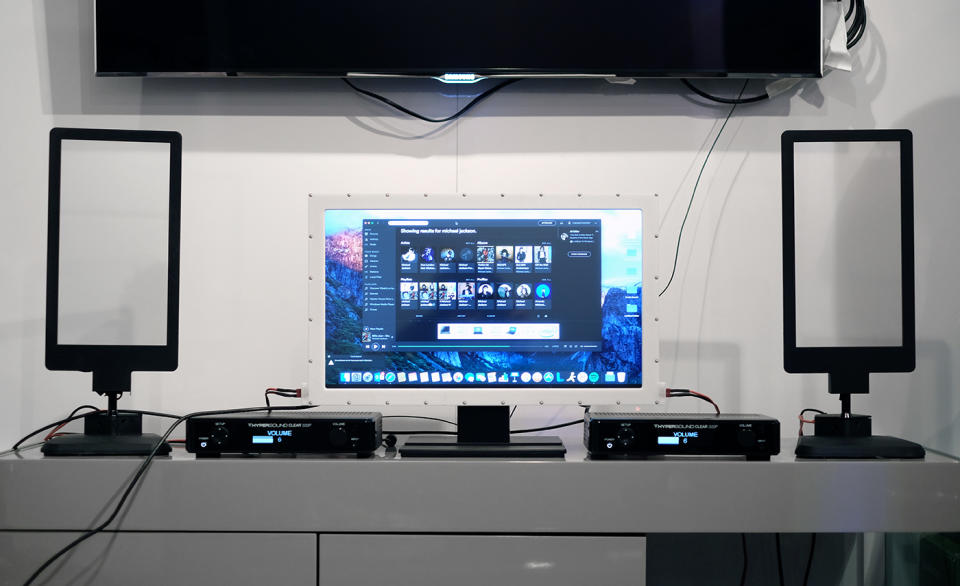Turtle Beach's glass speaker fires a focused 'beam' of audio
HyperSound Glass could open up myriad possibilities in the future.

Turtle Beach's HyperSound Glass is one of the most impressive tech demos I've seen in years.
The broad pitch used to sell the concept is pretty easy to grasp. With traditional speakers, sound travels out like light from a lamp: It's directed, for sure, but not focused. HyperSound is more like a flashlight: a concentrated "beam" of sound, which is only fully audible in front of the "speaker," a piece of glass.
To achieve this trick, HyperSound starts by creating audio in the ultrasound spectrum -- sound waves at a higher frequency than the human hearing range. By the time they reach your ears, those waves are entirely audible, of course.
HyperSound tech is already in use in a single product from Turtle Beach, albeit without glass. The HyperSound Clear 500p is designed to help the hard-of-hearing watch television. It's a pair of ultrasonic speakers that are meant to be positioned directly toward a listener, allowing him to better hear high-frequency audio (i.e., dialogue) while others watching the television listen to the regular output of the TV.

The demo had a piece of glass laid over a monitor, connected to a MacBook Pro via a receiver box that does the audio processing. Around 6 feet in front of the setup was a couch, where I was instructed to sit. From my position, Michael Jackson's "Billy Jean" came through crystal-clear. The glass outputs a tinny but listenable sound -- akin to the output of a tweeter, rather than balanced speaker. When I moved to the side of the room, I could still hear the sound, but it was very quiet. My ears were also convinced the sound was coming from the couch: It sounded as though someone had left a cellphone gently playing music on it.
Turtle Beach hopes its Glass prototype will spark a conversation on what can be done with the tech. The company floated a few ideas: the glass on a car dashboard giving the driver -- and only the driver -- instructions, or something simpler like a TV, smartphone or laptop having the equivalent of an audio privacy mode. For TV watching, which is by the far the most appealing of the concepts to me, you'd need to nestle a midrange speaker by the listener. The company was very clear that this is a proof of concept for glass-based speakers, and that any commercial product is many years away. But as a tech demo? Wow.
Follow all the news from E3 2016 here!
